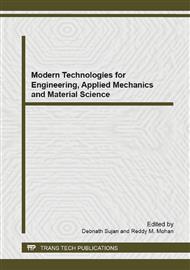p.102
p.107
p.112
p.117
p.122
p.127
p.132
p.137
p.142
Identification of the Mechanical Properties of High-Strength Steel Using Digital Image Correlation
Abstract:
Identification of the mechanical properties of high-strength steel using digital image correlation. In this paper an experimental procedure to identify the plastic behaviour of sheet metals up to large strains using full field measurement is presented. The tests were conducted on notched specimens. This geometry generates a heterogeneous strain field which was measured during the test using a digital image correlation system. The advantage of using a heterogeneous strain field in the identification procedure is that a complex state of stress-strain can be analyzed at the same time and much more information can be obtained in a single test. On the other hand, the stress field cannot be directly computed from the test and a suitable identification procedure must be developed. Here, the virtual fields method (VFM) adapted for large strains and plasticity was used to identify the hardening behaviour and the anisotropy of the material. The values obtained with the VFM were compared with the results from a standard identification made using uniaxial tensile tests.
Info:
Periodical:
Pages:
122-126
Citation:
Online since:
June 2014
Authors:
Price:
Сopyright:
© 2014 Trans Tech Publications Ltd. All Rights Reserved
Share:
Citation:


